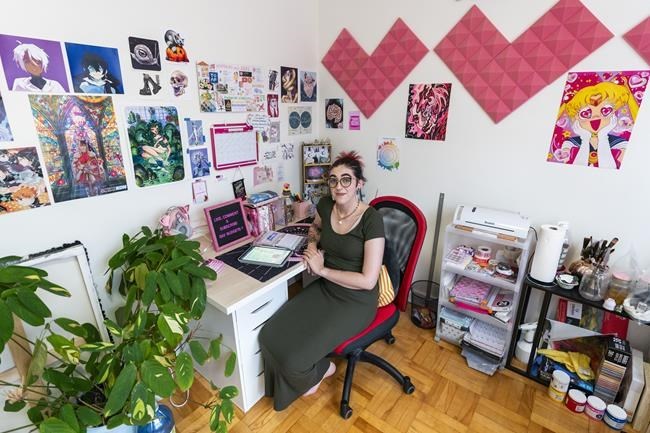TORONTO — Savannah Dasilva was searching for a budgeting method she could stick to for years to come.
The Toronto student dabbled with Excel spreadsheets, but they got confusing fast, and budgeting apps, which never seemed to do the trick. She even sought help from a credit counselling society but found their system was too "cut and dry" to hook her.
"I tried every single budgeting method that is under the sun and I couldn't find a single thing that worked for me," she recently recalled.
"I was kind of at my wit's end figuring out what is something that is fun and makes sense for my brain."
It wasn't until she was browsing YouTube at the end of August 2021, when she found a method that would finally work for her: cash stuffing.
The process involves allocating varying amounts of cash to envelopes or pouches labelled with savings priorities that range from the typical — rent, groceries and utilities — to the more individualized — travel, gifts, pet expenses and entertainment.
Dasilva, who said she grew up in a low-income household and was never properly taught how to budget, quickly embraced the method. She began using it to budget for school and health expenses, start an emergency fund and even for special occasions such as an annual anime convention she attends.
"I'm a visual learner, so being able to see where my money is going ... has been extremely helpful," said Dasilva, who keeps herself accountable by documenting her cash stuffing on her YouTube channel, Sav Budgets.
The cash-stuffing method Dasilva uses is not exactly new — personal finance experts have been recommending similar approaches for decades — but it's picked up a fervent following in recent years as social media influencers adopted the technique.
YouTube, TikTok and Instagram are rife with videos of people rationalizing their budgets as they fill envelopes. Vendors on marketplaces like Etsy specialize in cash-stuffing binders and pockets.
Some experts say the timing couldn't be better. With inflation still stubbornly high and interest rates not poised to drop soon, they see cash stuffing as a crucial tool to get people thinking more acutely about managing their finances during a time when budgets are tight.
But others warn the method is antiquated and say it's better to keep your money in a savings account, where it can earn interest and is harder to lose.
Gayle Ramsay, Bank of Montreal's head of everyday banking, segments and customer growth, sees both sides.
"The concept is a really good idea, but I think there are ways to do it where you don't necessarily have to have envelopes of cash lying around your house," she said.
Many banks offer savings account where you can direct money within the account to specific goals and even have the portions auto deposited at a regular interval.
"If you want to save for a house, save for a vacation, you can set up those categories and then set up money going into it," Ramsay said.
"So you're being paid interest and also it's tracking to see the progress that you're making."
Setting up your cash stuffing digitally allows customers to use products like BMO's CashTrack, which uses artificial intelligence to collect purchase data and generate individualized insights about spending habits.
Such products are a good way to see how your spending is comparing to your budget, said Ramsay, who was told by CashTrack that her grocery spending was up 137 per cent in July.
The number was a shock, but when she clicked to get more details, she realized it covered a period where she was doing a lot of entertaining.
But some people find the visual cue of an emptying envelope resonates more.
Dasilva balances her need for budgeting to be visual with wanting to snag the benefits of a savings account by depositing cash into a high-interest savings account every time she hits a higher value like $100 in an envelope.
She said some people carry out virtual cash stuffing completely through bank accounts and just use fake money in videos to mirror the process.
When Sasha Gray reaches milestone totals — think $500 — in some of her categories, she puts the money into a high-interest savings account and replaces the cash with a placeholder card.
The small business owner based in B.C.'s Lower Mainland adopted such practices when she started cash stuffing roughly a year ago after stumbling upon the method through social media.
"I was in a place where I had a lot of debt and I just didn't know where to go from there and I was desperate to try anything, so I gave it a shot," she said.
One year later, she's still using the method and has paid off more than $25,000 of her debt.
She recommends people considering the method give themselves ample time to adjust to it, because it can be overwhelming at first.
"A lot of times people will give it like a week, and they just get fed up, but you have to treat it like a diet," she said.
"Take it slow and actually give yourself some real time to see if the method works for you."
This report by The Canadian Press was first published Aug. 24, 2023.
Tara Deschamps, The Canadian Press



